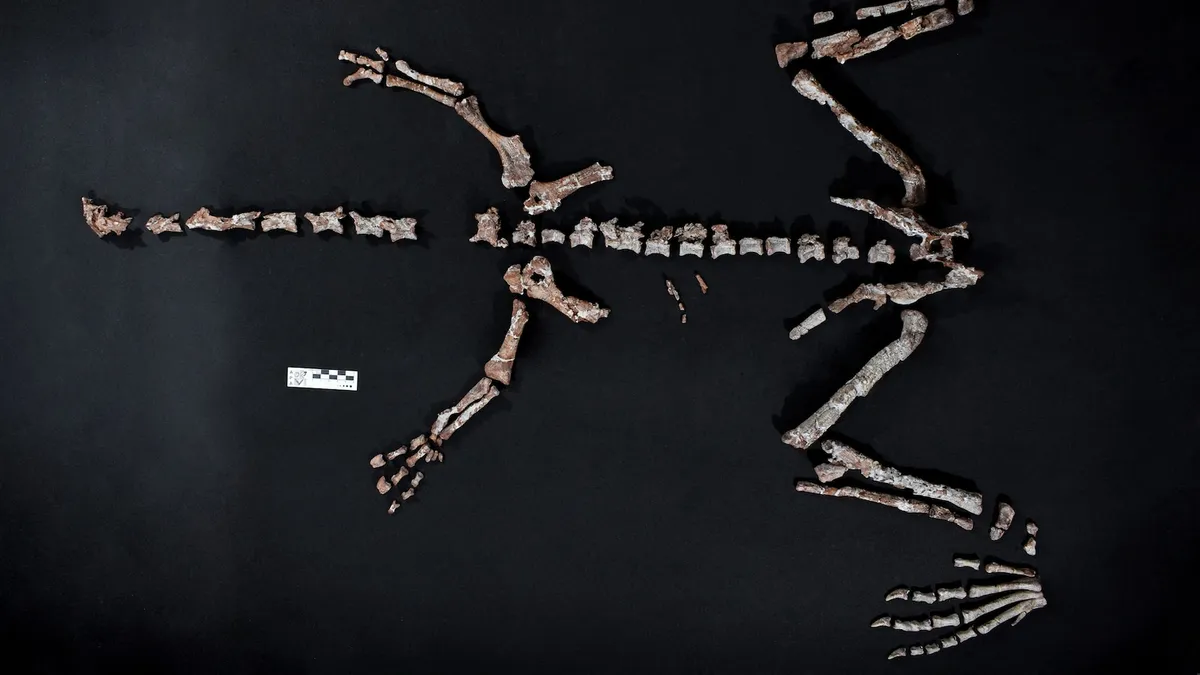
Paleontologists have made a remarkable discovery in Argentina, shedding light on the evolutionary history of plant-eating dinosaurs and the development of their iconic long necks. A new species of sauropodomorph, named Huayracursor jaguensis, was unearthed from the Santo Domingo Formation located in the Andes of La Rioja province, according to a recent paper published in Nature.
Huayracursor jaguensis is believed to have existed during the Late Triassic period, approximately between 201 million and 237 million years ago. The fossilized neck bones of this dinosaur exhibit unique extensions that may represent crucial evolutionary steps leading to the long-necked sauropodomorphs that later roamed the region. Researchers suggest that these adaptations played a significant role in the diversification of various animal groups during this transformative period.
During the Late Triassic, the planet experienced drastic ecosystem changes that fostered a surge in biodiversity among multiple animal lineages, including dinosaurs, early relatives of mammals, and groups related to modern crocodiles. The evidence for early dinosaur evolution is predominantly rooted in South America, with many key discoveries originating from the Ischigualasto-Villa Unión Basin in western Argentina and the Paraná Basin in southern Brazil.
The discovery of H. jaguensis marks a significant milestone as it is the first fauna recovered from the newly identified Northern Precordillera Basin. Notably, this species was found in a unique habitat situated in the Andes mountain range, approximately 2 miles above sea level, which adds to the complexity of its evolutionary narrative.
Sauropodomorphs are renowned for their immense size and elongated necks, with the clade encompassing famous species like the brontosaurus. Interestingly, the earliest known sauropodomorphs weighed around 22 pounds and featured relatively short necks. Over time, significant increases in body mass and neck length were observed, indicating that these vital traits emerged early in the history of dinosaurs.
The estimated size of H. jaguensis is nearly 5 feet in length, with a weight of about 40 pounds. While its neck was shorter compared to later sauropodomorphs, the cervical vertebrae exhibited signs of elongation. This finding enriches the understanding of the diversity and geographical distribution of early dinosaurs, highlighting the evolutionary journey that led to the iconic long-necked forms we associate with sauropods today.
In summary, the discovery of Huayracursor jaguensis not only enhances our knowledge of dinosaurs but also provides significant insights into the evolutionary mechanisms that facilitated the rise of long-necked herbivores during the Late Triassic period. This research underscores the importance of continued paleontological exploration in uncovering the mysteries of our planet's prehistoric past.